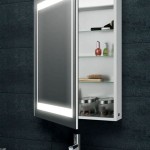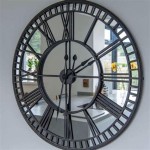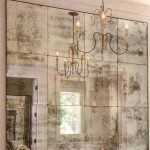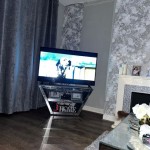Why Do Car Headlights Use Concave Mirrors?
Car headlights are a critical safety feature, enabling drivers to see the road ahead at night and in low-visibility conditions. The effectiveness of a headlight system relies heavily on the efficient projection of light, a task accomplished through the strategic use of concave mirrors. This article explores the scientific principles behind this design choice and its advantages in automotive lighting.
Key Principles of Concave Mirrors
Concave mirrors, characterized by their inward-curving reflective surface, possess unique optical properties that make them ideal for headlight applications. When light rays strike a concave mirror, they are reflected towards a single point known as the focal point. This convergence of light rays allows for the creation of a focused and intense beam.
Focal Point and Light Beam Formation
The position of the light source relative to the focal point of the concave mirror determines the characteristics of the reflected beam. When the light source is placed at the focal point, the reflected rays emerge parallel to each other, creating a concentrated, long-range beam ideal for high-beam headlights. Positioning the light source slightly away from the focal point results in a slightly diverging beam, providing a wider spread of light suitable for low-beam illumination.
Advantages of Concave Mirrors in Headlights
Several advantages contribute to the prevalence of concave mirrors in headlight design:
- Efficient Light Collection: The curved surface of the concave mirror efficiently gathers light emitted from the bulb, minimizing light loss and maximizing the brightness of the projected beam. This efficient light collection is crucial for enhancing visibility in challenging driving conditions.
- Beam Control and Focus: The reflective properties of the concave mirror allow for precise control over the shape and direction of the light beam. This control is essential for creating distinct high-beam and low-beam patterns, ensuring optimal illumination without blinding oncoming drivers.
- Compact Design: Concave mirrors can achieve significant light magnification and projection within a relatively compact space. This compact design is advantageous in automotive applications where space constraints are a significant factor.
Evolution of Headlight Technology
While the fundamental principles of concave mirrors remain constant, headlight technology has evolved significantly over time. Early headlights used parabolic reflectors, a specific type of concave mirror, in conjunction with incandescent bulbs. These systems, while effective, offered limited control over beam pattern and intensity. Modern headlight systems often incorporate more complex reflector designs or projector lenses alongside the concave mirror to further refine beam control and intensity. The introduction of halogen, HID (High-Intensity Discharge), and LED light sources has also led to significant improvements in brightness, efficiency, and lifespan.
Reflector Design Variations
Modern headlight reflectors often employ variations on the basic parabolic shape to optimize light distribution. These variations include:
- Multi-surface reflectors: These reflectors utilize multiple curved surfaces to create more complex beam patterns, enhancing both near-field and far-field illumination.
- Freeform reflectors: These reflectors are designed using computer-aided design (CAD) software, enabling precise control over the shape and reflection of light. This allows for highly optimized beam patterns that meet specific regulatory requirements and improve visibility.
Projector Headlights
Projector headlights represent another advancement in automotive lighting technology. These systems use a concave reflector to collect light from the bulb and focus it onto a lens. This lens further shapes and directs the light beam, creating a sharper, more defined pattern with reduced scatter. Projector headlights are known for their improved light control and greater intensity compared to traditional reflector-based systems.
Legal Regulations and Standards
Headlight design and performance are subject to strict regulations and standards to ensure safety and prevent glare for oncoming traffic. These regulations dictate specific parameters for beam pattern, intensity, and color. The precise design of the concave reflector and other optical elements within the headlight assembly are crucial for meeting these requirements.
The Role of Materials and Coatings
The materials and coatings used in headlight reflectors play a critical role in their performance. High-quality reflective coatings are essential for maximizing light reflection and minimizing light loss. Durable materials are necessary to withstand environmental factors such as heat, moisture, and UV radiation, ensuring long-term reliability.

Car Headlights
Flashlights And Car Headlights All Have Concave Mirrors Why Would It Not Be A Good Idea To Use Convex Mirror Instead Quora

Concave Vs Convex Mirrors In Cars

Which Mirror Is Used In The Headlights Of A Car

How A Concave Mirror Is Used In Headlights And Searchlights To Throw Light At Long Distance Homework Study Com

Why Headlights Used Concave Mirror

Concave Vs Convex Mirrors In Cars

Why Are Concave Mirrors Used In Headlights Socratic
Why Are Concave Lenses Used In The Headlights Of A Car Quora

State The Type Of Mirrors Used For I Headlights And Ii Rearview In Cars Motorcycles Give Reason To Justify Your Answer Each Case








